William Mitchell: Stations of the Cross
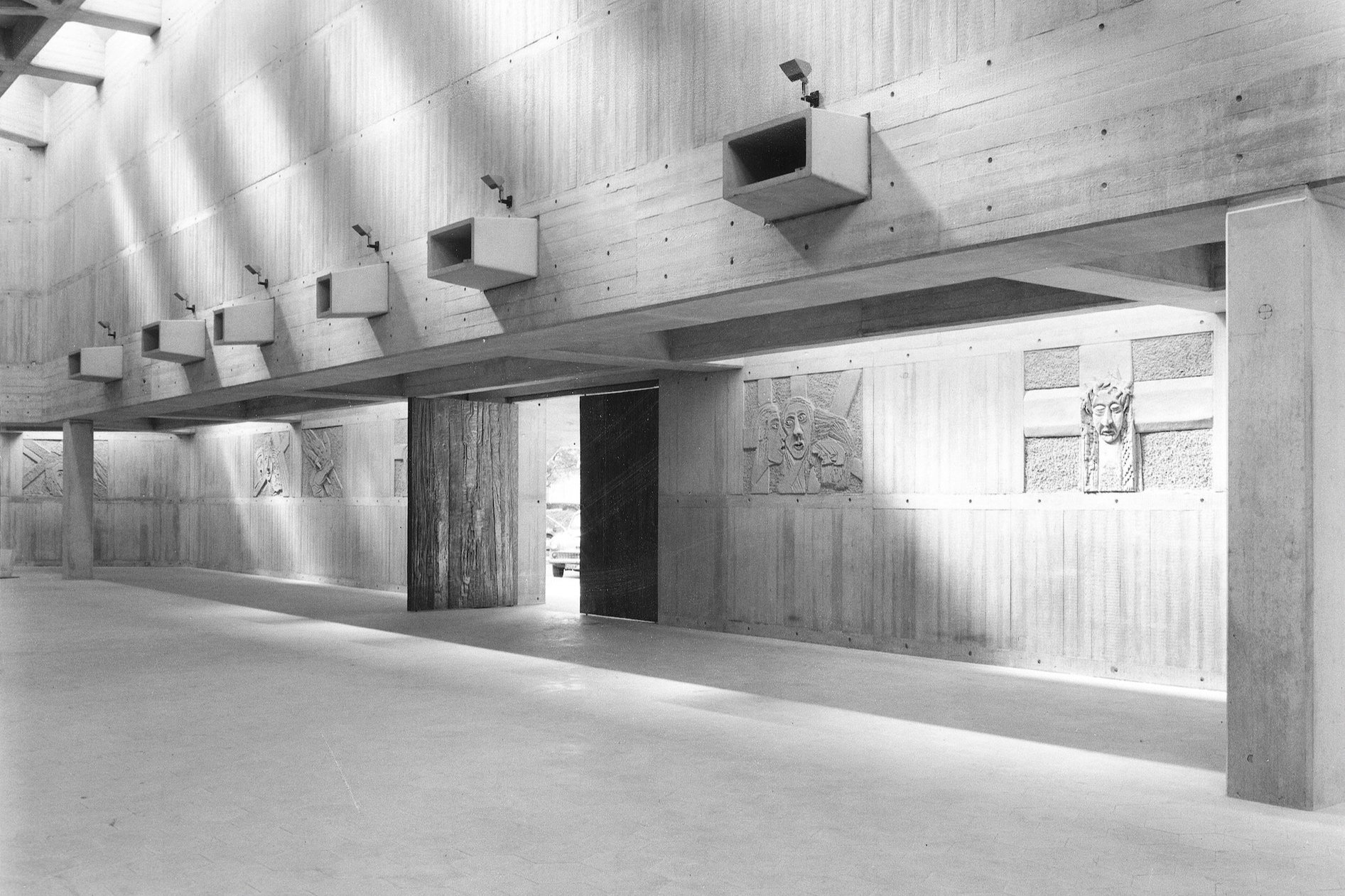

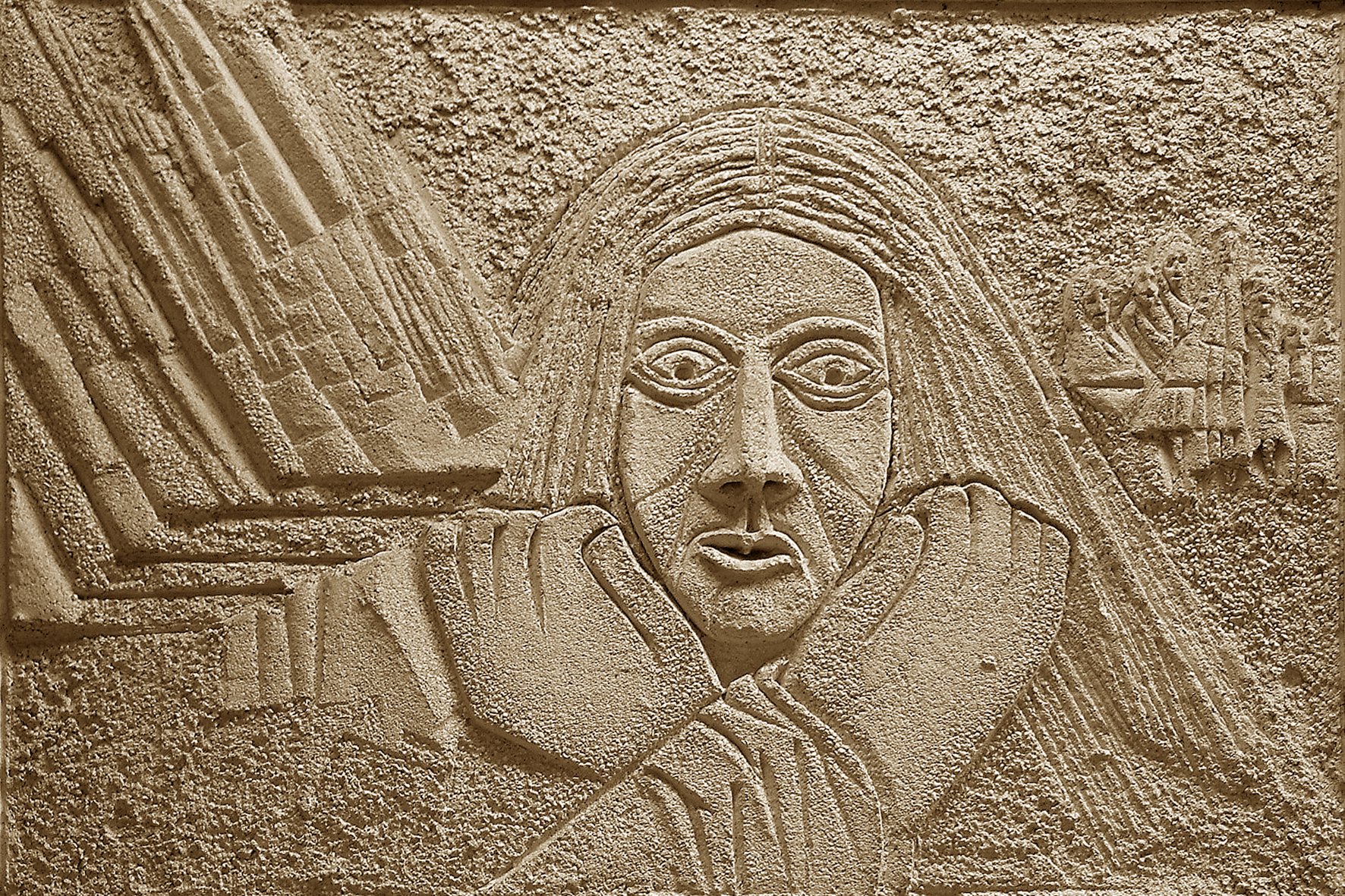
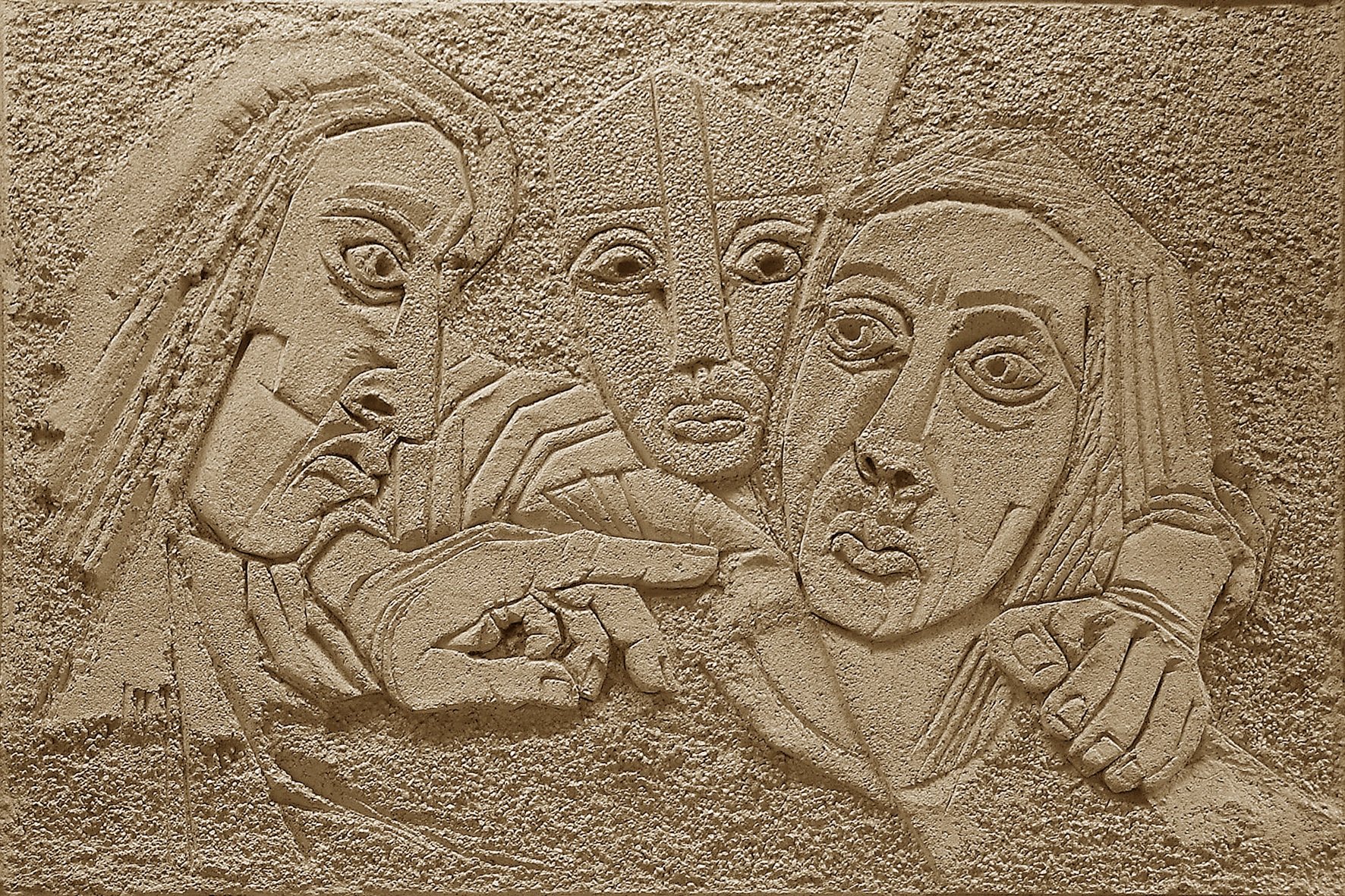
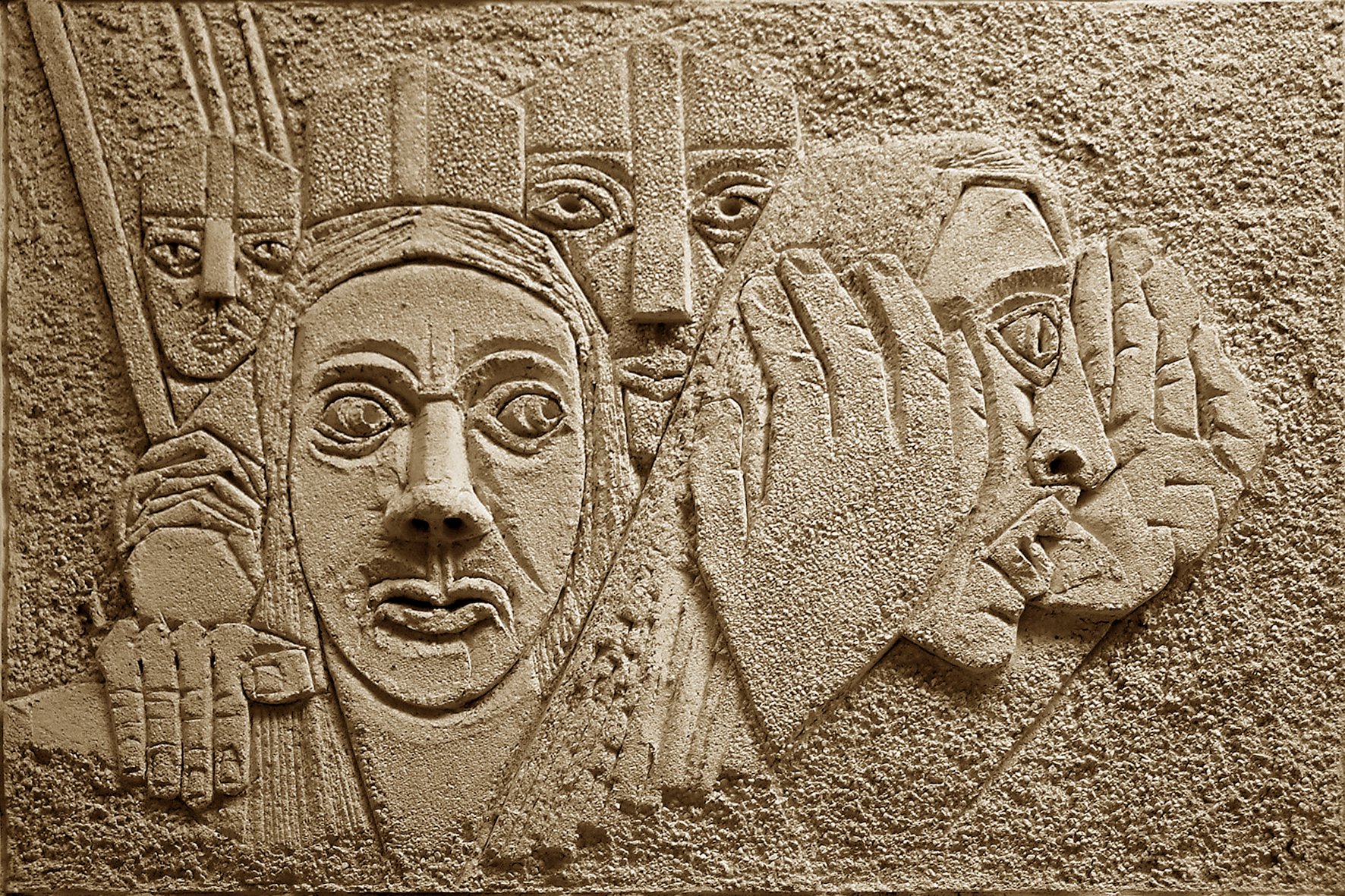
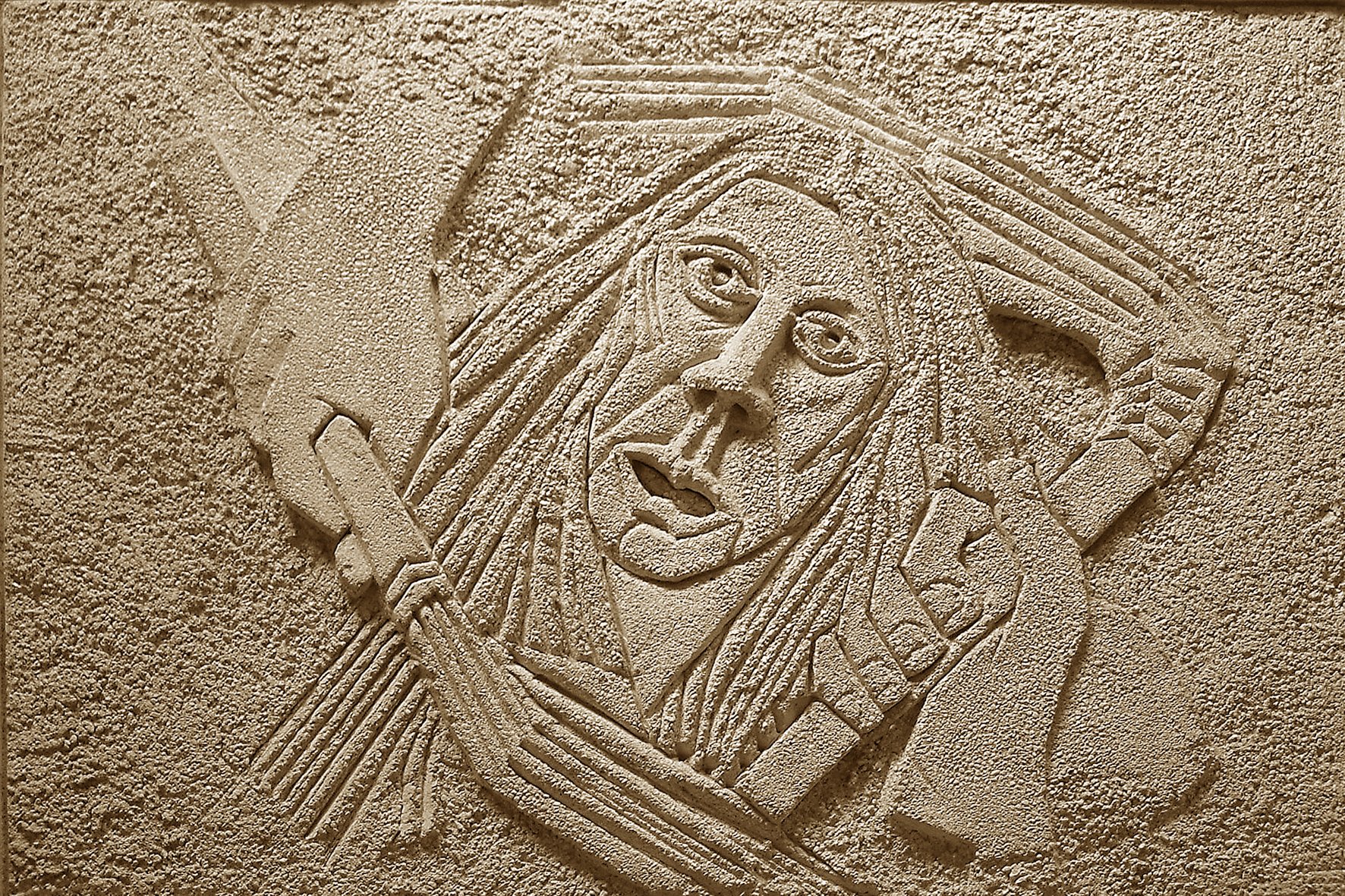
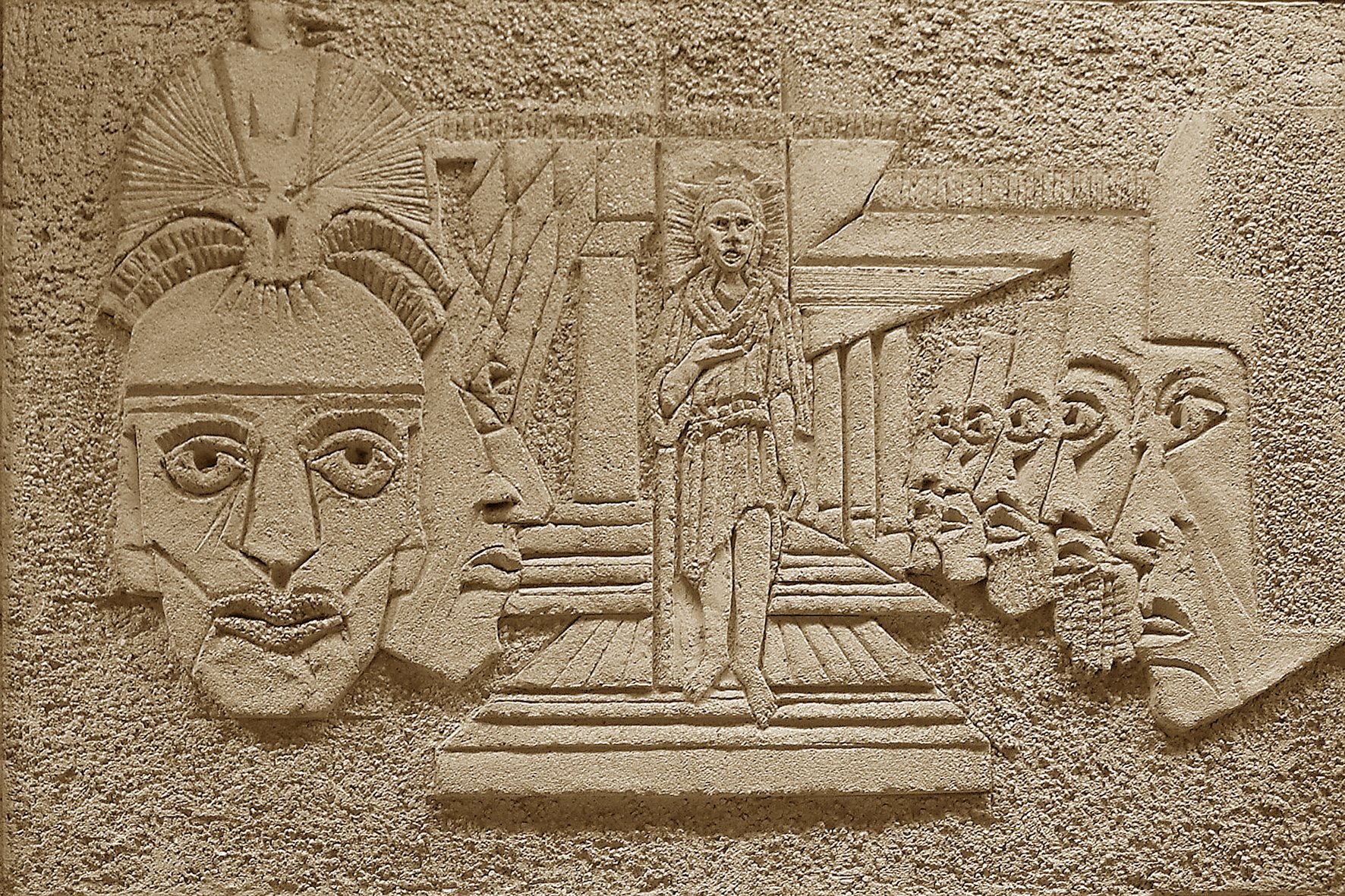
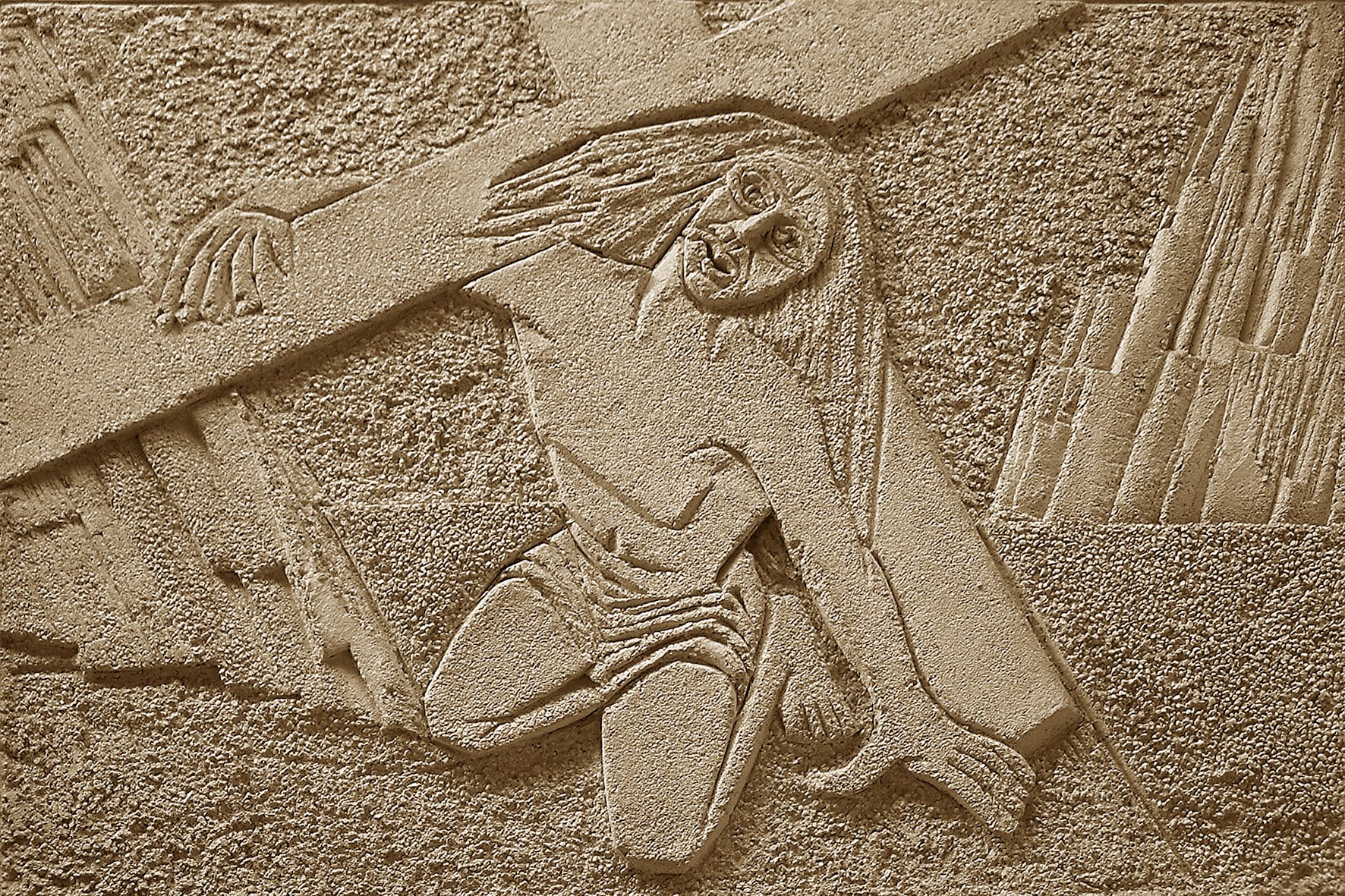
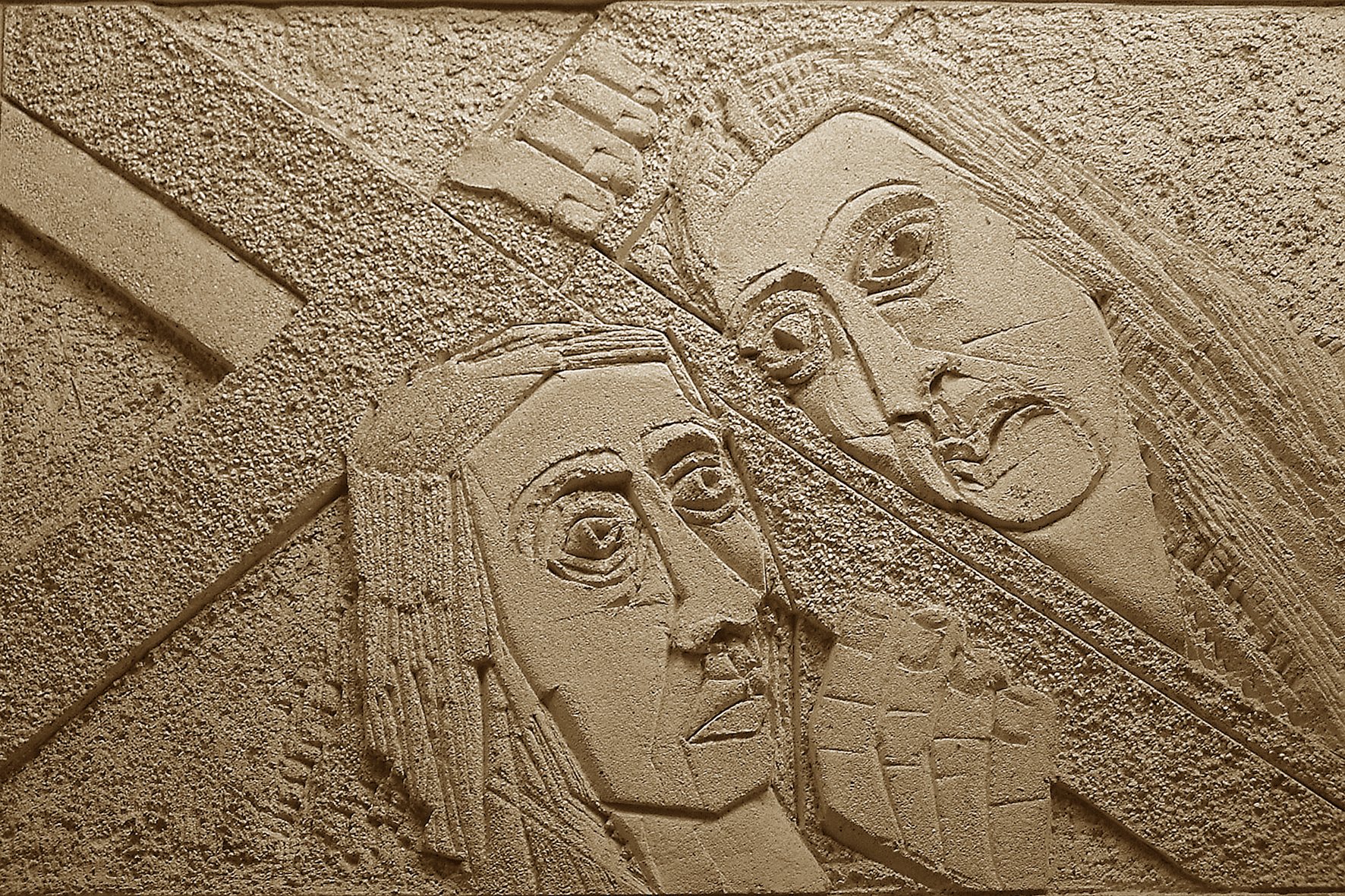
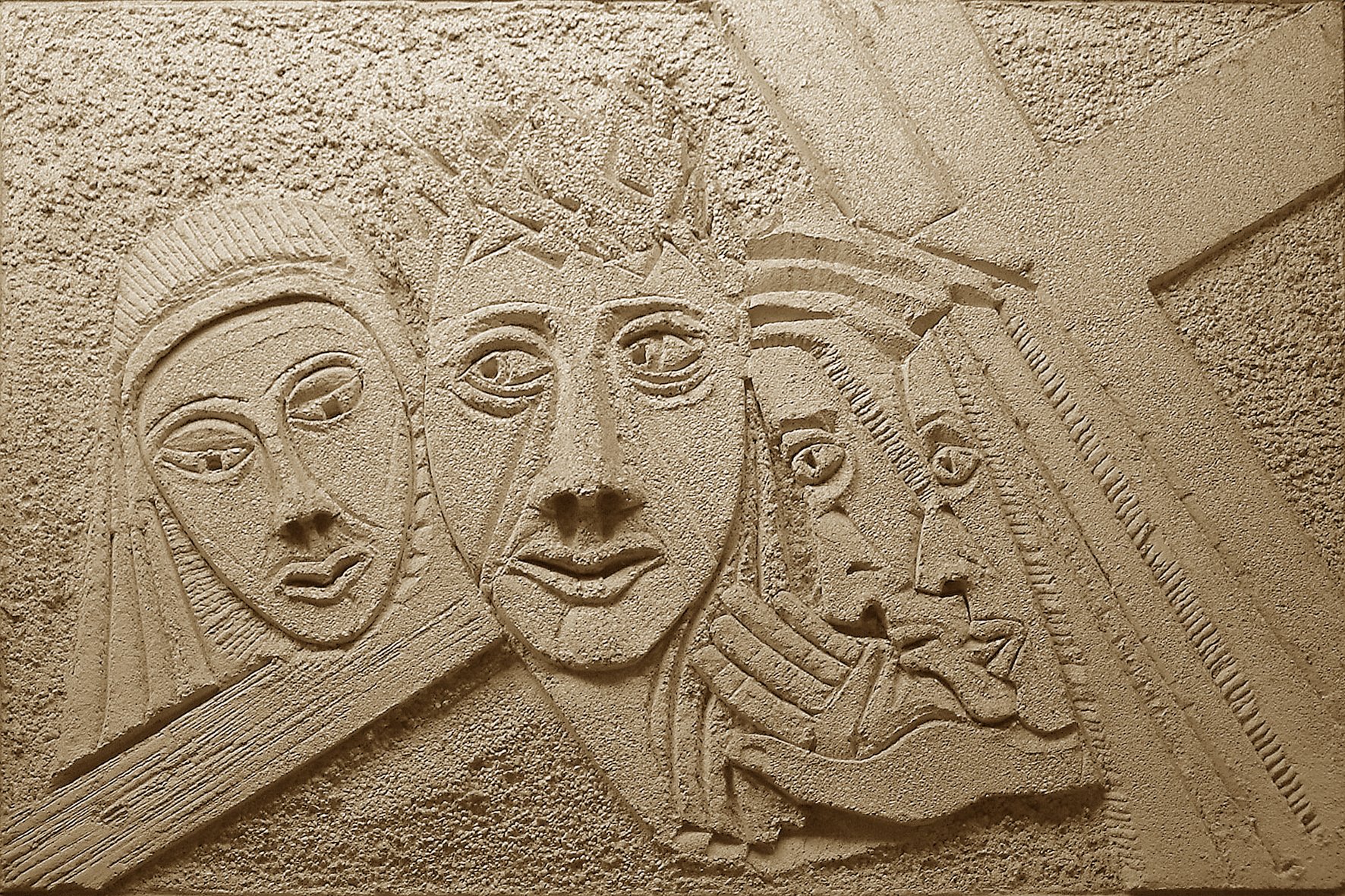
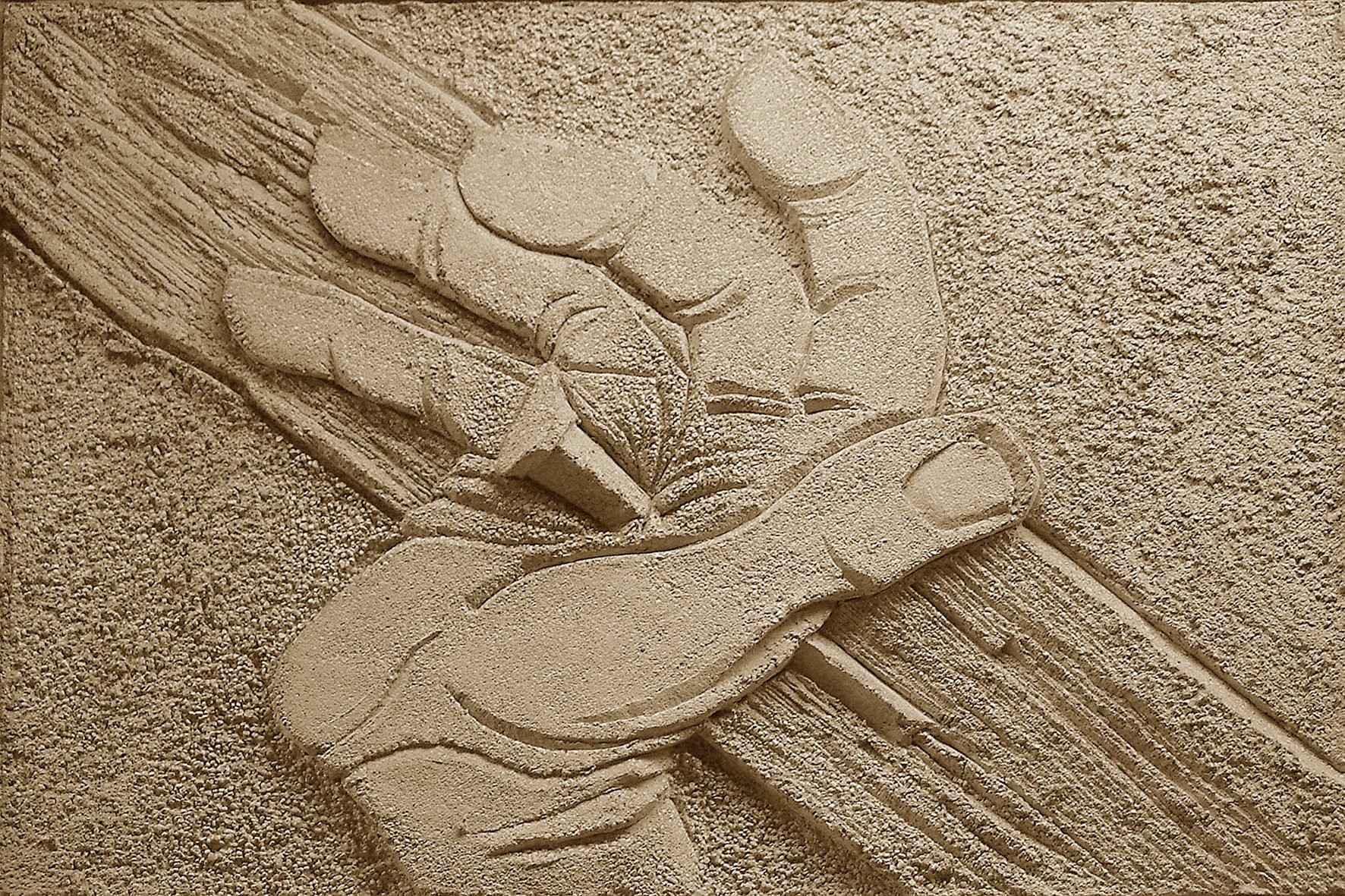
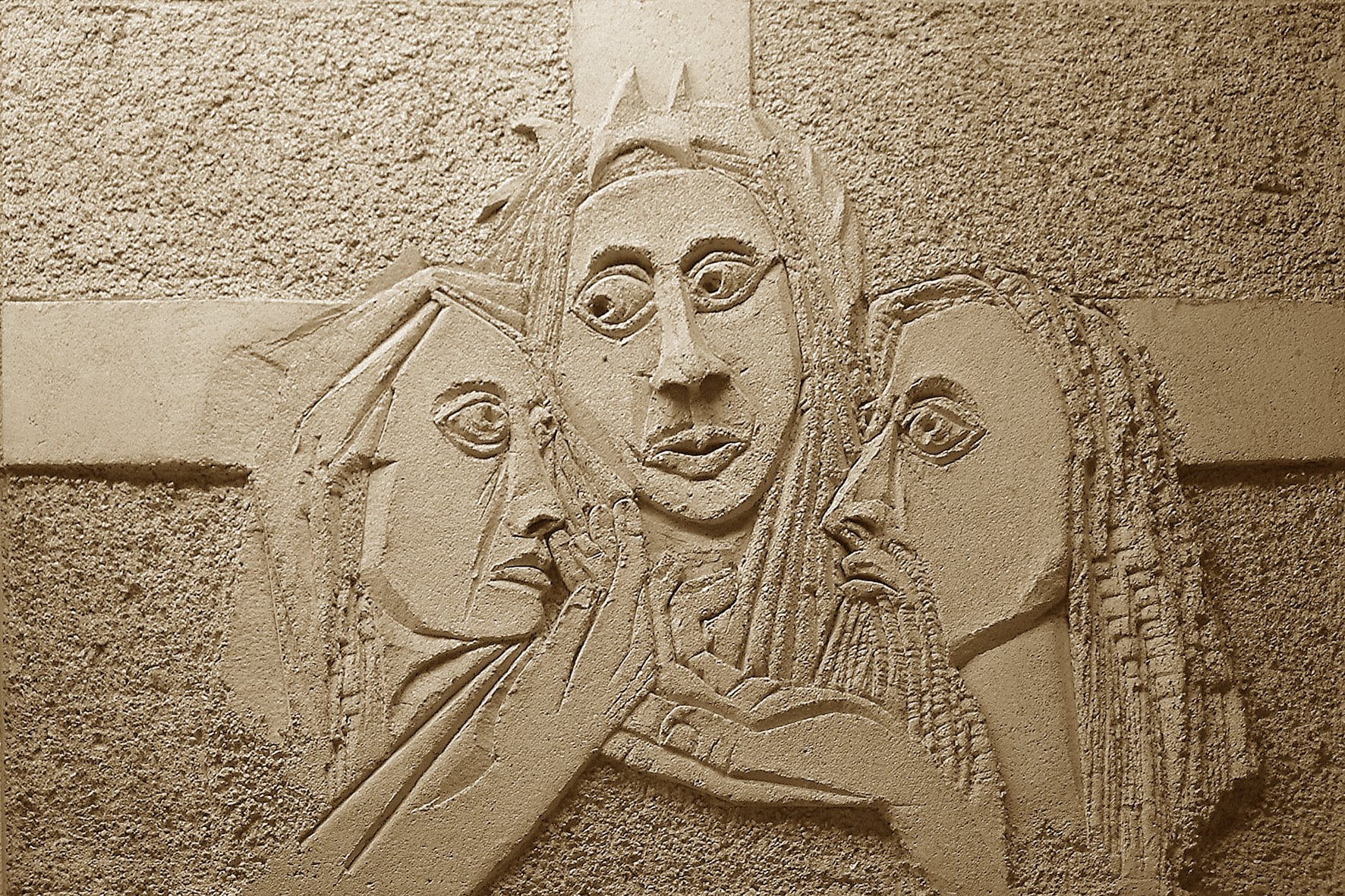
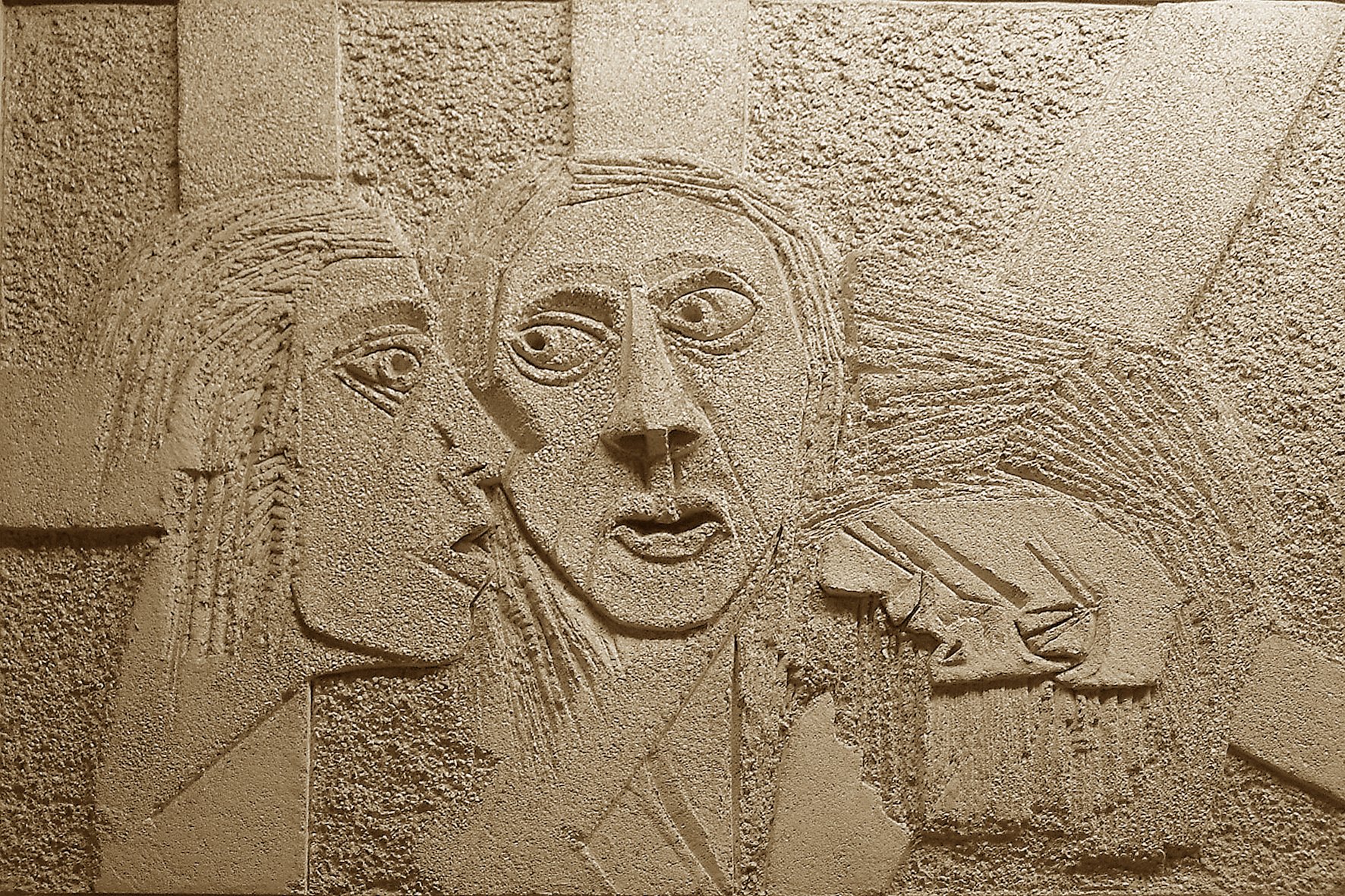
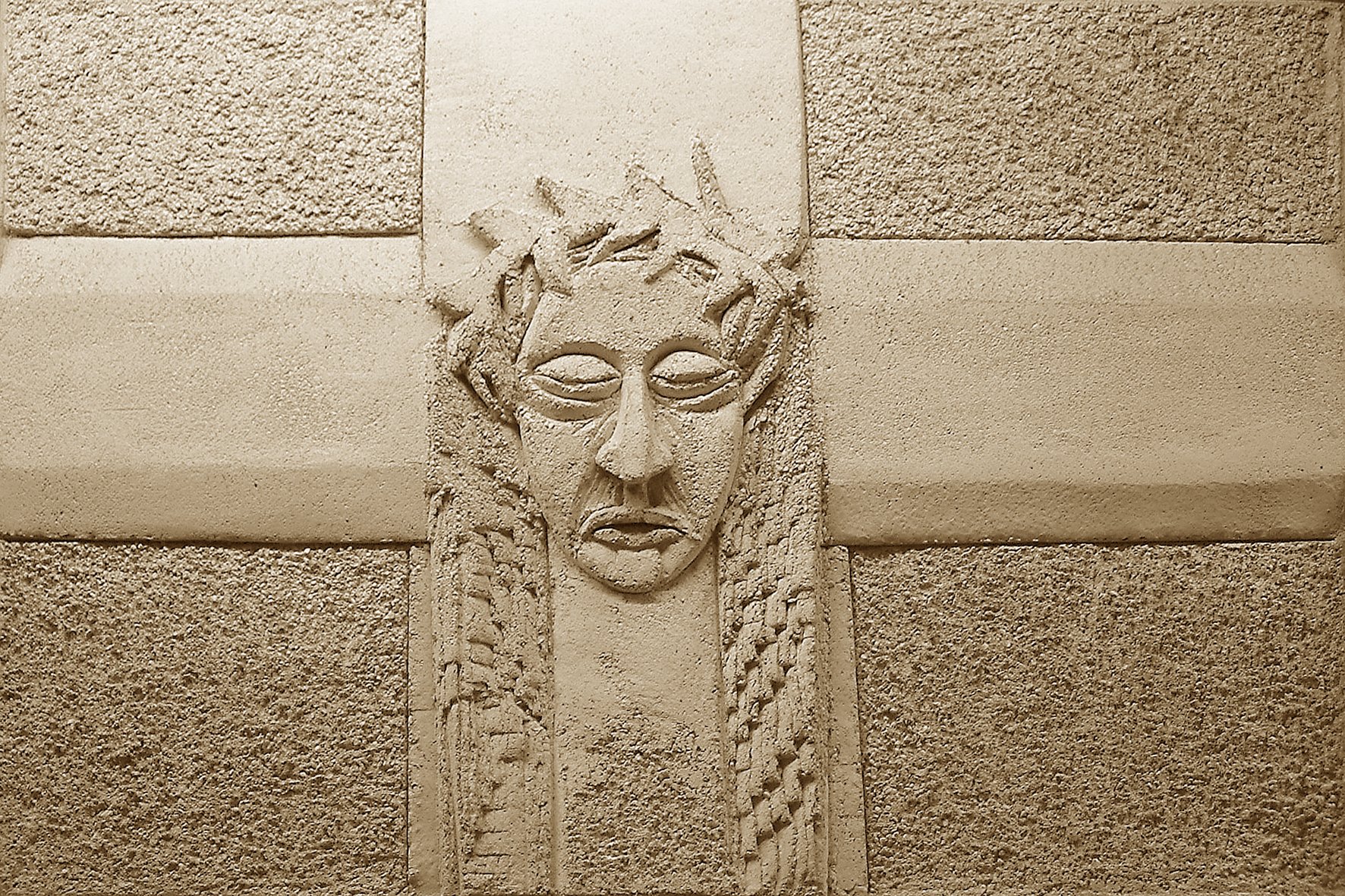

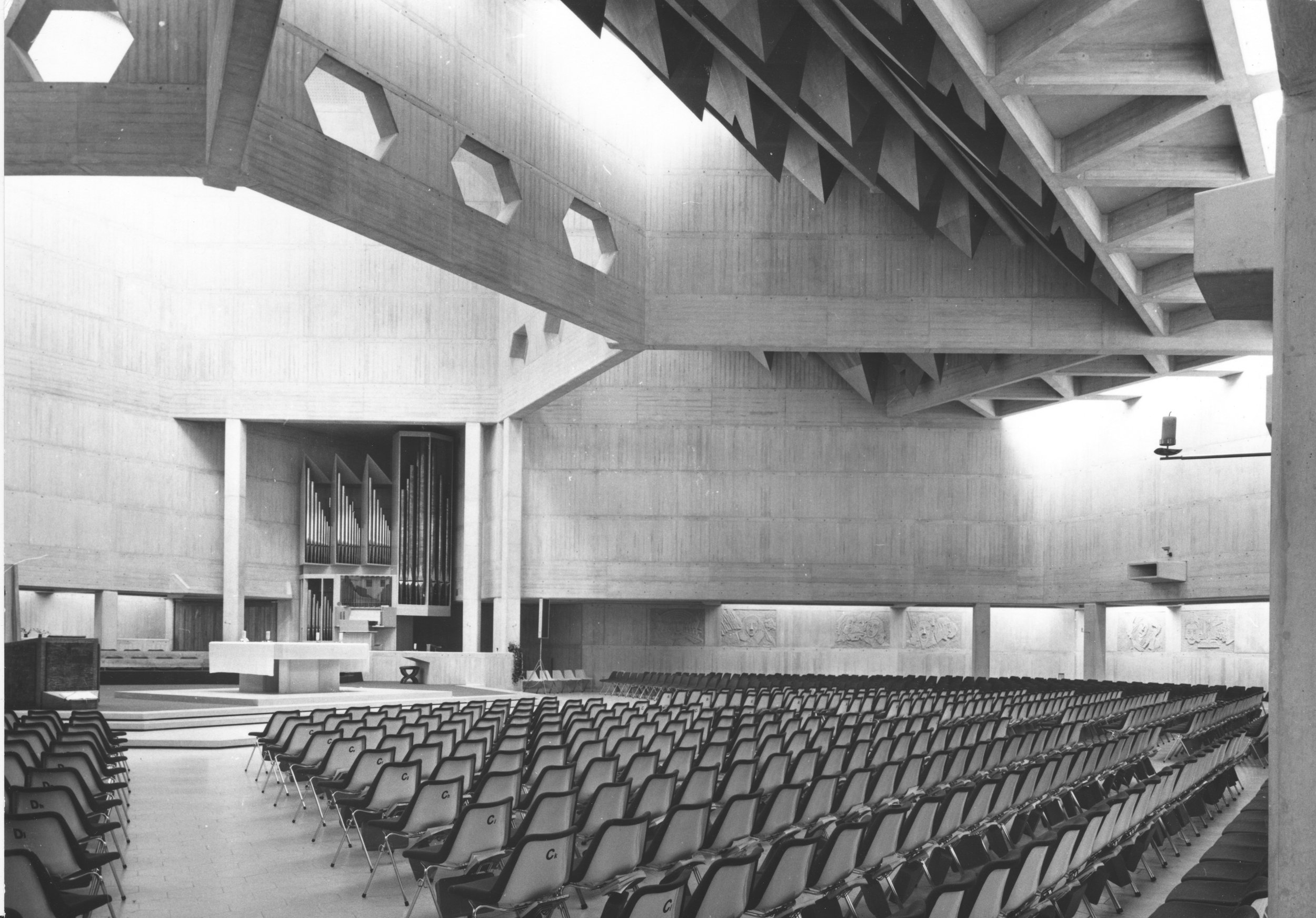
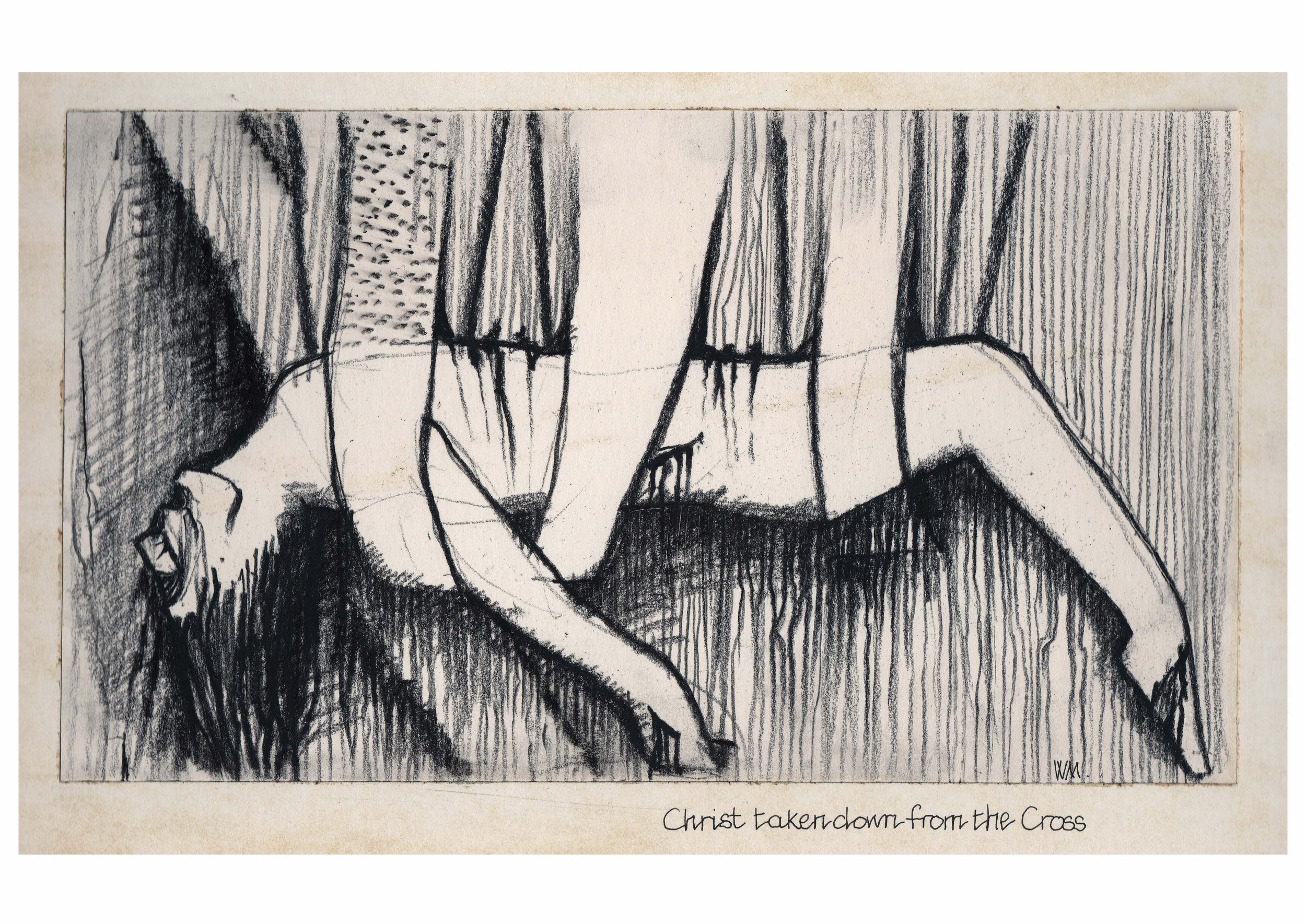
Title: Stations of the Cross
Artist: William Mitchell (1925–2020)
Location: Clifton Cathedral (RC)
Date: 1973
The architectural sculptor William Mitchell was commissioned to make the Stations of the Cross for the new Clifton Cathedral, built 1969–73 to designs by Ronald Weeks in close collaboration with clergy and theological advisors. The concrete church, almost entirely monochrome and undecorated, is notable for the success of its integration of the ideas of the liturgical reform movements of the twentieth century, and its expression of the principles of the Second Vatican Council – a ‘sermon in concrete’, in the words of Nikolaus Pevsner.
The fourteen panels were carved in situ, around the hexagonal nave, in Faircrete, a fibrous, quick-setting form of concrete, making them an integral part of the church building, both spatially and materially. For each panel, Mitchell only had 1 ½ hours to work on the image before it set, a constraint which he felt, as the architectural historian Robert Proctor has reported, ‘would prevent conventional forms from creeping into his work’. The forms are indeed strikingly new and immediate: expressive close-ups against abstracted backgrounds, the faces bearing the simple, outsized features of early medieval figures. The panel depicting Christ nailed to the Cross shows only a colossal hand against a heavy textured beam, the nail in relief with the skin puckered around it, the fingers contorted.
More radical still is the set of scenes chosen for the Stations: deviating from the traditional set of fourteen, of which many do not have basis in the Gospels, Mitchell expanded the temporal scope to include the Last Supper and the Resurrection (represented here by Christ breaking the bread at Emmaus) – a move so unprecedented that the designs were submitted to the Vatican for approval. The Cathedral has produced a set of reflections specific to the chosen scenes. Mitchell’s Stations, in their emphasis on the Eucharistic meal, draw on post-conciliar ideas of the liturgy, incorporating what had previously been understood as a private devotion into public, communal worship. Their raw monumentality offers the contemporary viewer a startling vision of Christ’s Passion, its brutality, and the hope embodied in communion.
William Mitchell (1925–2020) was born in London to left-wing, working class parents. His childhood was often spent in hospitals and charitable institutions. He undertook a brief informal apprenticeship in furniture making then forged his father’s signature to join the Navy at 15. After the war he decorated NAAFI canteens, before studying design at the Southern College of Art in Portsmouth, then the Royal College of Art, where he won the Prix de Rome. He is best known for his works in concrete and fibreglass commissioned for housing estates and public spaces in the 1960s and 70s, working with architects such as Frederick Gibberd and Basil Spence. These works, such as the ‘Pineapple’ in Basildon and murals in Coventry and Kidderminster, as well as those for Liverpool Metropolitan and Clifton Cathedrals, he rarely signed, wanting the works to belong to the communities for whom they had been made. He became one of the foremost architectural sculptors of the time, lecturing around the world on producing public art. In the 1990s he designed the Egyptian Hall at Harrods. Having seen many of his works destroyed or neglected in the 1980s, he lived to enjoy a resurgence of interest in post-war architecture, although some of his most significant works were only listed after his death in 2020.
Further Information
Medium: Faircrete
Permanent display
See William Mitchell’s Stations of the Cross on the Ecclesiart map here.
Other artworks in churches by William Mitchell: Façade and doors, Liverpool Metropolitan Cathedral.
Other works of modern and contemporary art in Clifton Cathedral: font, Simon Verity; stained glass dalle de verre windows, Henry Haig (1972-3); Mary, the Woman of Faith, Terry Jones.
Stained glass at Clifton Cathedral: For comment on the stained glass see Visit Stained Glass, which is an online showcase for some of Britain’s finest stained glass windows.
